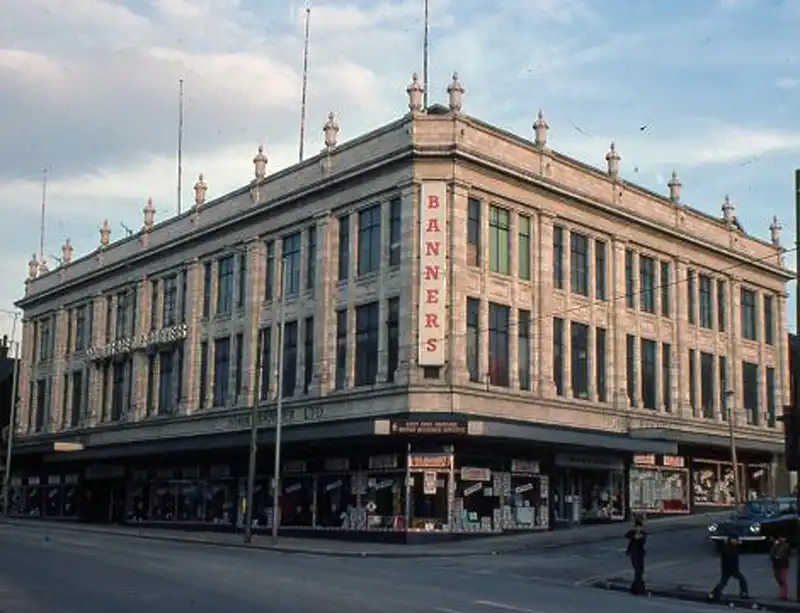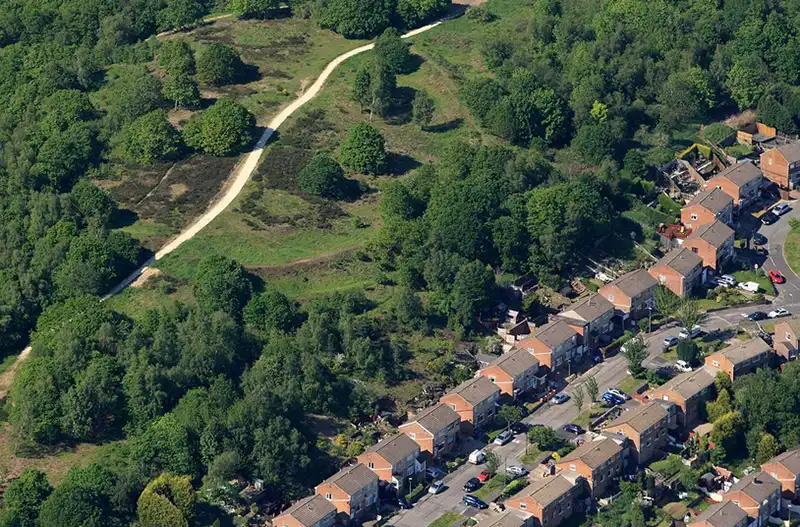Attercliffe has a rich and diverse history.
Once a rural hamlet, Attercliffe grew into an industrial hub during the 19th and early 20th centuries, becoming synonymous with steelmaking, community spirit, and cultural landmarks. Today, its legacy lives on through its historical sites, tales of notable figures, and role in Sheffield’s industrial revolution.
Steelmaking History
Attercliffe’s transformation from a pastoral village to an industrial powerhouse began in the late 18th century as Sheffield’s reputation for steelmaking flourished. The availability of coal and the proximity to the River Don made Attercliffe an ideal location for heavy industry. By the 19th century, Attercliffe had become home to numerous steelworks, forges, and foundries, contributing significantly to Sheffield’s status as the “Steel City.”
One of the key advancements in steelmaking during this period was the Bessemer process, which revolutionized the production of high-quality steel. Many Attercliffe steelworks adopted this technology, enabling the area to produce tools, cutlery, and structural steel on an unprecedented scale. Workers in Attercliffe were skilled artisans and labourers who took immense pride in their craft, often working long hours in challenging conditions.
The industrial boom also led to the development of supporting industries, such as coal mining and engineering. The canal network, including the Sheffield and Tinsley Canal, was vital in transporting raw materials and finished goods. Attercliffe’s steelworks contributed to major projects worldwide, including bridges, railways, and ships, cementing its place in global industrial history.
Banners and Community Spirit
The industrial era also fostered a strong sense of community in Attercliffe. Trade unions and workers’ groups emerged to advocate for better working conditions and fair wages. One of the most striking symbols of this solidarity was the creation of trade union banners. These banners, often hand-painted and adorned with intricate designs, were carried proudly during marches, demonstrations, and celebrations. They depicted scenes of industrial pride, unity, and aspirations for a better future.
Attercliffe’s banners were not merely decorative but a rallying point for workers and their families. They were displayed during significant events, such as the May Day marches, and often bore slogans advocating for social justice, workers’ rights, and community improvement. These banners remain a testament to the resilience and collective strength of Attercliffe’s industrial workforce.
Attercliffe Baths
One of Attercliffe’s most cherished landmarks was the Attercliffe Baths. Opened in the late 19th century, the baths were more than just a place for swimming; they were a focal point for community life. At a time when many homes lacked indoor plumbing, the baths provided essential facilities for hygiene, including public washrooms and laundry services.
The swimming pool at Attercliffe Baths was a popular venue for recreational activities, swimming lessons, and local competitions. It became a gathering place for residents of all ages, fostering a sense of camaraderie and belonging. Over the years, the baths underwent several renovations to keep pace with modern standards, but their role as a community hub remained unchanged.
Unfortunately, like many historical buildings, the Attercliffe Baths fell into disrepair in the latter half of the 20th century and eventually closed. However, its memory continues to hold a special place in the hearts of those who experienced its warmth and vitality.
Historical Churches
Attercliffe’s religious heritage is another significant aspect of its history. The area was home to several notable churches that served as places of worship and as centres for education, charity, and community activities. Among these was the Attercliffe Parish Church, also known as Christ Church, built in 1826. The church’s imposing Gothic architecture and towering spire made it a landmark in the area.
Another important church was St. Bartholomew’s, which served the spiritual needs of Attercliffe’s growing population during the industrial boom. These churches provided much-needed support to working-class families, offering Sunday schools, welfare programs, and a sense of spiritual solace amidst the hardships of industrial life.
Over time, demographic changes and urban development led to the decline of some of these churches. However, their historical and architectural significance continues to be recognized, with efforts to preserve their legacy through restoration and documentation.
Spence Broughton
One of the more infamous chapters in Attercliffe’s history is the story of Spence Broughton, a highwayman who was executed in 1792 for robbing a mail coach. Broughton’s crime and subsequent punishment became a sensational tale that captured the public imagination. After his execution at York, Broughton’s body was brought back to Attercliffe and displayed on a gibbet near the site of his crime as a grim warning to others.
The gibbet stood for over three decades and became a macabre landmark. Locals and travellers alike were drawn to the site, which served as a reminder of the harsh justice of the time. Today, the story of Spence Broughton is remembered as part of Attercliffe’s folklore, illustrating the area’s connection to broader social and legal history.
Modern-Day Attercliffe
In the post-industrial era, Attercliffe has undergone significant changes. The decline of traditional industries led to economic challenges, but the area has shown remarkable resilience. Regeneration efforts have transformed parts of Attercliffe into commercial and leisure spaces, including establishing the Sheffield Arena and the Valley Centertainment complex.
While much of the old industrial landscape has disappeared, remnants of Attercliffe’s heritage remain. Historical buildings, old factory sites, and community archives offer glimpses into the area’s past. Local historians and heritage groups have worked tirelessly to preserve and share Attercliffe’s rich history with future generations.
Conclusion
Attercliffe’s journey from a quiet village to an industrial powerhouse and beyond is a story of transformation, resilience, and community spirit. Its steelmaking heritage, symbolized by the sweat and skill of countless workers, played a crucial role in shaping Sheffield’s identity. The banners of unity, the cherished Attercliffe Baths, the historical churches, and the tale of Spence Broughton all add unique layers to the area’s character.
Though much has changed, Attercliffe’s history inspires pride and reflection. Its legacy serves as a reminder of the challenges and triumphs of a community that helped shape a city and the wider world.

